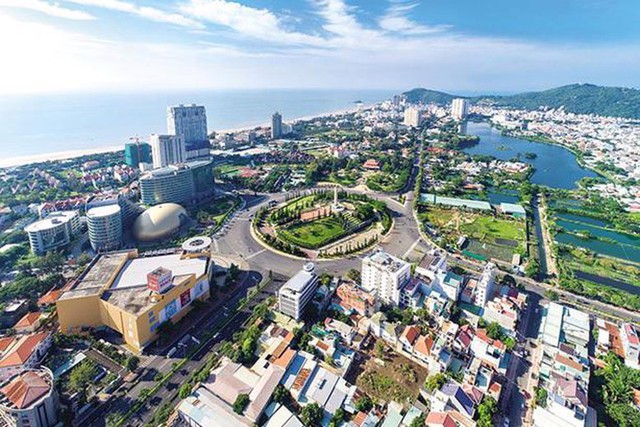Names and administrative centers of 34 provinces and centrally-run cities specified
VGP - The Government has approved a plan on the rearrangement and reorganization of administrative units at all levels and the development of a two-tier local government model.

Accordingly, the administrative boundaries of Ha Noi, Hue City, Lai Chau Province, Dien Bien Province, Son La Province, Lang Son Province, Quang Ninh Province, Thanh Hoa Province, Nghe An Province, Ha Tinh Province and Cao Bang Province remain unchanged.
The other localities will be merged to reduce the current number of provinces and centrally run cities to 34.
1. Merging Tuyen Quang and Ha Giang provinces.
The newly-established province shall be TUYEN QUANG with a total natural area of 13,795.6 square kilometers and a population of 1,731,600 people.
The political-administrative center of the new province shall be located in present-day Tuyen Quang city.
2. Merging Lao Cai and Yen Bai provinces.
The new province shall be LAO CAI with a total natural area of 13,257 square kilometers and a population of 1,656,500 people.
The political-administrative center of the new province shall be located in present-day Yen Bai city.
3. Merging Bac Kan and Thai Nguyen provinces.
The new province shall be THAI NGUYEN with a total natural area of 8,375.3 square kilometers and a population of 1,694,500 people.
The political-administrative center of the new province shall be located in present-day Thai Nguyen city
4. Merging Vinh Phuc, Phu Tho, and Hoa Binh provinces.
The new province shall be PHU THO with a total natural area of 9,361.4 square kilometers and a population of 3,663,600 people.
The political-administrative center of the new province shall be located in present day Viet Tri city.
5. Merging Bac Ninh and Bac Giang provinces.
The new province shall be BAC NINH with a total natural area of 4,718.6 square kilometers and a population of 3,509,100 people.
The political-administrative center of the new province shall be located in present-day Bac Giang city.
6. Merging Hung Yen and Thai Binh provinces.
The new province shall be HUNG YEN with a total natural area of 2,514.8 square kilometers and a population of 3,208,400 people.
The political-administrative center of the new province shall be located in present-day Hung Yen city.
7. Merging Hai Duong province and Hai Phong city
The new name of the locality shall be HAI PHONG with a total natural area of 3,194.7 square kilometers and a population of 4,102,700 people.
The political-administrative center of the new locality shall be located in present-day Thuy Nguyen city.
8. Merging Ha Nam, Ninh Binh, and Nam Dinh provinces.
The new province shall be NINH BINH with a total natural area of 3,942.6 square kilometers and a population of 3,818,700 people.
The political-administrative center of the new province shall be located in present-day Ninh Binh city.
9. Merging Quang Binh and Quang Tri provinces.
The new province shall be QUANG TRI with a total natural area of 12,700 square kilometers and a population of 1,584,000 people.
The political-administrative center of the new province shall be located in present-day Dong Hoi city.
10. Merging Quang Nam province and Da Nang city.
The new locality shall be DA NANG with a total natural area of 11,859.6 square kilometers and a population of 2,819,900 people.
The political-administrative center of the new locality shall be located in present-day Hai Chau district
11. Merging Kon Tum and Quang Ngai provinces.
The new province shall be QUANG NGAI with a natural area of 14,832.6 square kilometers and a population of 1,861,700 people.
The political-administrative center of the new locality shall be located in present-day Quang Ngai city.
12. Merging Gia Lai and Binh Dinh provinces.
The new province shall be GIA LAI with a total natural area of 21,576.5 square kilometers and a population of 3,153,300 people.
The political-administrative center of the new locality shall be located in present-day Quy Nhon city.
13. Merging Ninh Thuan and Khanh Hoa provinces.
The new province shall be KHANH HOA with a total natural area of 8,555.9 square kilometers and a population of 1,882,000 people.
The political-administrative center of the new province shall be located in present-day Nha Trang city.
14. Merging Lam Dong, Dak Nong, and Binh Thuan provinces.
The new province shall be LAM DONG with a total natural area of 24,233.1 square kilometers and a population of 3,324,400 people.
The political-administrative center of the new province shall be located in present-day Da Lat city.
15. Merging Dak Lak and Phu Yen provinces.
The new province shall be DAK LAK with a total natural area of 18,096.4 square kilometers and a population of 2,831,300 people.
The political-administrative center of the new province shall be located in present-day Buon Ma Thuot.
16. Merging Ba Ria - Vung Tau, Binh Duong, and Ho Chi Minh City.
The new locality shall be HO CHI MINH CITY with a total natural area of 6,772.6 square kilometers and a population of 13,608,800 people.
The political-administrative center of the new locality shall be located in present-day District One (of current Ho Chi Minh City).
17. Merging Dong Nai and Binh Phuoc provinces
The new province shall be DONG NAI with a total natural area of 12,737.2 square kilometers and a population of 4,427,700 people.
The political-administrative center of the new locality shall be located in present-day Bien Hoa city.
18. Merging Tay Ninh and Long An provinces.
The new province shall be TAY NINH with a total natural area of 8,536.5 square kilometers and a population of 2,959,000 people.
The political-administrative center of the new locality shall be located in present-day Tay An city.
19. Merging Can Tho City, Soc Trang and Hau Giang provinces.
The new locality shall be CAN THO with a total natural area of 6,360.8 square kilometers and a population of 3,207,000 people.
The political-administrative center of the new locality shall be located in present-day Ninh Kieu District.
20. Merging Ben Tre, Vinh Long, and Tra Vinh provinces.
The new province shall be VINH LONG with a total natural area of 6,296.2 square kilometers and a population of 3,367,400 people.
The political-administrative center of the new locality shall be located in present-day Vinh Long city.
21. Merging Tien Giang and Dong Thap provinces.
The new province shall be DONG THAP with a total natural area of 5,938.7 square kilometers and a population of 3,397,200 people.
The political-administrative center of the new locality shall be located in present-day My Tho city.
22. Merging Bac Lieu and Ca Mau provinces.
The new province shall be CA MAU with a total natural area of 7,942.4 square kilometers and a population of 2,140,600 people.
The political-administrative center of the new locality shall be located in present-day Ca Mau city.
23. Merging An Giang and Kien Giang provinces.
The new province shall be AN GIANG with a total natural area of 9,888.9 square kilometers and a population of 3,697,200 people.
The political-administrative center of the new locality shall be located in present-day Rach Gia city.
Also under the plan, the two-tier local administration system shall include: (i) provincial-level administration of provinces and centrally-run cities; (ii) commune-level administration of communes and wards.
The district-level and township-level administrations shall be dissolved./.

